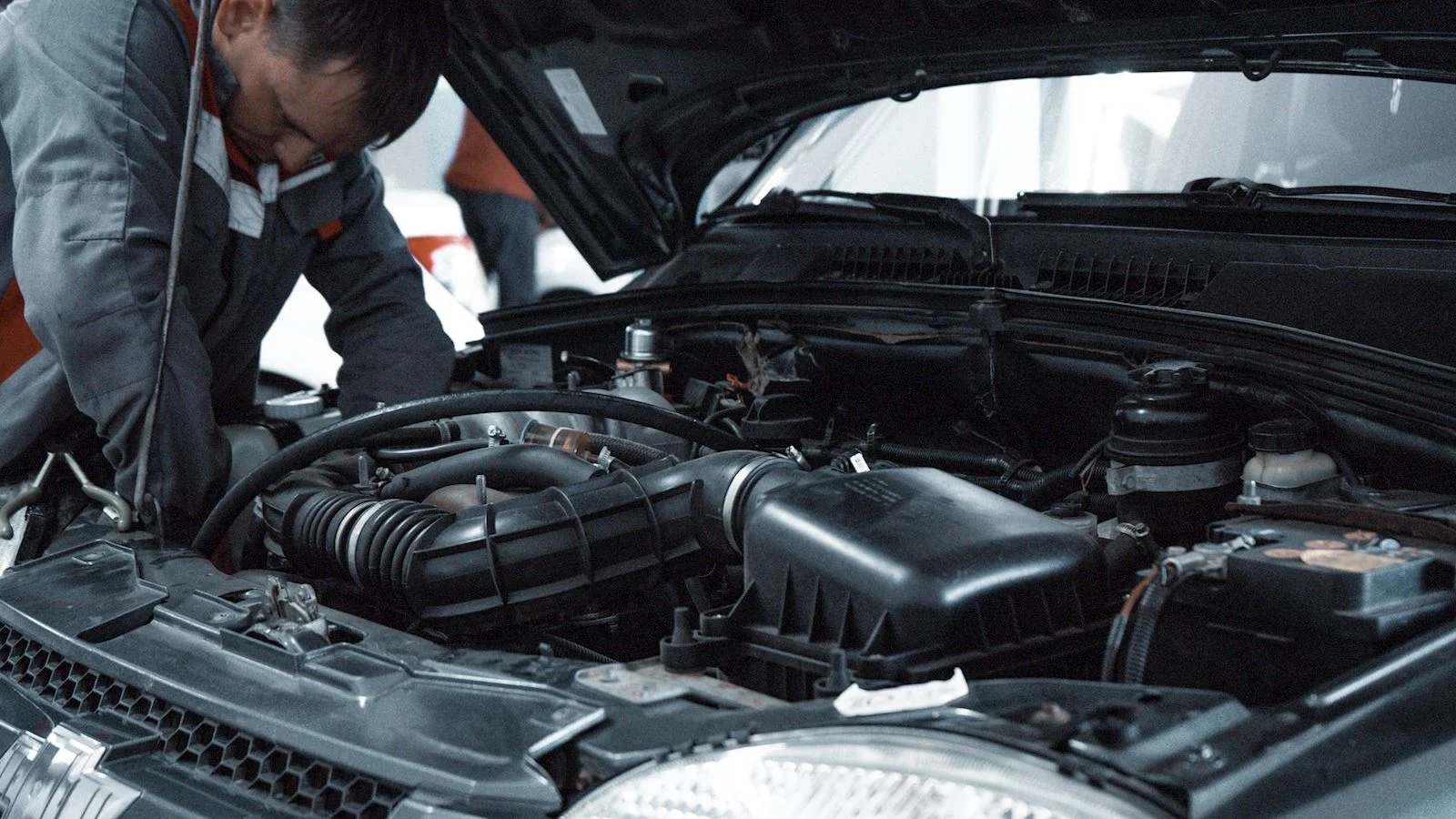


Transmission fluid is a vital component in the proper functioning of a vehicle's transmission system. It serves as a lubricant and coolant, ensuring smooth operation and preventing excessive wear and tear on the transmission components. Regular maintenance, including timely transmission fluid changes, is crucial for extending the lifespan of the transmission and maintaining optimal vehicle performance.
Today, I'm going to share with you the inside scoop on changing transmission fluid – why it's crucial, how to diagnose when it's time for a change, and what's involved in the process. Buckle up, and let's dive into the greasy details!

Your vehicle's transmission is a complex and hardworking component, responsible for transferring power from the engine to the wheels. It's a tough job, involving a lot of moving parts, intense pressure, and high temperatures. That's where transmission fluid comes into play – it acts as a lubricant, keeping those intricate gears and clutches running smoothly while also helping to transfer heat away from the transmission.
However, like any fluid, transmission fluid doesn't last forever. Over time, it breaks down and becomes contaminated due to the extreme heat and friction it endures. As it degrades, its lubricating abilities diminish, leading to increased wear and tear on the transmission components. Neglecting to change the fluid can ultimately result in costly repairs or even complete transmission failure.
Here are some common issues and causes related to transmission fluid degradation:
| Issue | Cause |
|---|---|
| Fluid breakdown and contamination | Heat and friction reduce lubricating ability |
| Low fluid levels | Leaks in the transmission system |
| Accelerated wear and damage | Lack of regular fluid changes |
So, how do you know when it's time to change your transmission fluid? Well, there are a few telltale signs to watch out for:
Discolored or Dirty Fluid: One of the easiest ways to check is by inspecting the fluid itself. If it's dark, opaque, or has a burnt smell, that's a clear indication that it needs to be replaced.
Slipping Gears: If you notice your transmission slipping in and out of gears, or hesitating when shifting, it could be a sign of low fluid levels or contaminated fluid.
Strange Noises: Grinding, whining, or clunking sounds coming from the transmission area are never a good sign. These noises often indicate worn or damaged components due to lack of proper lubrication.
Warning Lights: Modern vehicles are equipped with various warning lights on the dashboard, including ones specifically for transmission issues. If you see a transmission-related light illuminated, it's time to get it checked out.
To diagnose the issue, you can follow these steps:
| Diagnostic Step | Description |
|---|---|
| Check fluid level | Use the dipstick when the engine is warmed up and running. Look for low levels or discolored/dirty fluid. |
| Observe symptoms | Pay attention to signs like slipping gears, delayed engagement, strange noises, burning smells, and warning lights. |
If you notice any of these signs or symptoms, it's best to have your transmission fluid checked and changed as soon as possible to prevent further damage.
Now, let's talk about the actual process of changing transmission fluid. There are two main methods: a simple fluid change or a complete flush.
For a basic fluid change, the old fluid is drained from the transmission pan, and the filter is replaced with a new one. Fresh, clean fluid is then added through the fill port until it reaches the proper level.
This process is relatively straightforward and can typically be done in about an hour or so, depending on the vehicle. It's a good option for regular maintenance intervals or if you've caught the fluid degradation early on.
If your fluid is severely contaminated or you're dealing with an older vehicle with high mileage, a complete flush may be recommended. In this process, a specialized machine is used to cycle new fluid through the entire transmission system while simultaneously removing the old, contaminated fluid.
A flush is more thorough and ensures that every nook and cranny of the transmission is filled with fresh, clean fluid. However, it's also more time-consuming and expensive than a simple fluid change.
Regardless of the method used, it's crucial to follow the manufacturer's recommendations for the specific type of transmission fluid required for your vehicle. Using the wrong fluid can cause serious damage and lead to premature transmission failure.
Here's a comparison of the two methods:
| Method | Description | Pros | Cons |
|---|---|---|---|
| Simple Fluid Change | Old fluid is drained, filter replaced, and new fluid added | Relatively quick and inexpensive | May not remove all contamination |
| Complete Flush | Machine cycles new fluid through the entire system, removing old fluid | More thorough cleaning | More time-consuming and costly |
Now, let's talk about the elephant in the room – cost. The average cost for a simple transmission fluid change can range from $80 to $250 for an automatic transmission, and around $100 for a manual transmission. Prices tend to be higher for older vehicles or those with more complex transmissions.
A complete flush and filter replacement can set you back anywhere from $230 to $475, depending on the make and model of your vehicle, as well as the labor costs at the repair shop.
While these costs may seem steep, it's important to remember that neglecting transmission fluid maintenance can lead to much more expensive repairs down the line. A transmission replacement can easily cost thousands of dollars, making regular fluid changes a worthwhile investment in extending the life of your vehicle.
Here's a breakdown of typical costs:
| Service | Average Cost Range |
|---|---|
| Automatic Transmission Fluid Change | $80 - $250 |
| Older Automatic Transmission Fluid Change | $150 - $300 |
| Manual Transmission Fluid Change | Around $100 |
| Complete Transmission Flush and Filter Replacement | $230 - $475 |
Keep in mind that these costs can vary based on factors like:
Vehicle make and model
Type of transmission (manual, automatic, CVT)
Specific fluid required
Labor costs at the repair shop
Any additional repairs needed
Prices are typically higher at the dealership compared to independent repair shops.
As with most things in life, prevention is better than cure when it comes to transmission maintenance. Following the manufacturer's recommended service intervals for fluid changes is crucial. For most vehicles, this means changing the transmission fluid every 30,000 to 100,000 miles, depending on the make and model.

Additionally, it's essential to address any leaks or other transmission issues promptly. Even a small leak can lead to low fluid levels and accelerated wear on the internal components.
Here are some tips for preventing future transmission issues:
Follow the recommended service intervals for fluid changes
Address any leaks or other issues promptly
Use the correct transmission fluid type specified for your vehicle
By staying on top of regular fluid changes and addressing any issues as they arise, you can help ensure that your transmission remains in top shape for years to come.
Well, there you have it, folks – the inside scoop on changing transmission fluid from a seasoned mechanic's perspective. Remember, your transmission is a vital component that deserves proper care and maintenance. By staying vigilant about fluid changes and addressing any issues promptly, you can save yourself a lot of headaches and costly repairs down the road.
So, the next time you're due for a transmission fluid change, don't hesitate to bring your trusty ride to your local mechanic. We'll have your transmission purring like a kitten in no time!
The most common causes include worn or damaged transmission seals and gaskets, cracked fluid lines, and a damaged transmission pan or drain plug. Addressing leaks promptly is crucial to prevent further damage.
Check for any visible signs of leakage around the transmission components, such as the pan, lines, and seals. You can also use a dye additive and UV light to pinpoint the exact location of the leak.
Minor leaks from the drain plug or transmission pan gasket may be repairable for experienced DIYers. However, more complex leaks involving seals or lines often require professional repair.
The cost can vary widely depending on the source of the leak and the extent of the repair required. Minor gasket or seal replacements may cost a few hundred dollars, while major repairs can exceed $1,000.
Ignoring a transmission fluid leak can lead to complete fluid loss, resulting in accelerated wear, overheating, and potentially catastrophic transmission failure, which can be extremely costly to repair or replace.
It's recommended to check your transmission fluid level at least once a month or before any long trips. Consult your owner's manual for the proper procedure and fluid level specifications.
Always use the type of transmission fluid specified by your vehicle's manufacturer. Using the wrong fluid can cause damage and void your warranty.
Regular maintenance, such as fluid changes and inspections, can help identify and address potential issues before they lead to leaks. Avoid overloading your vehicle or aggressive driving, which can strain the transmission.
While rare, a transmission fluid flush can potentially dislodge debris or cause seals to swell, leading to leaks. It's essential to have flushes performed by a qualified technician.
Topping up transmission fluid is only a temporary solution and will not fix the underlying leak. It's best to address the leak's root cause to prevent further fluid loss and potential transmission damage.

Sarah isn't your average gearhead. With a double major in Mechanical Engineering and Automotive Technology, she dived straight into the world of car repair. After 15 years of turning wrenches at dealerships and independent shops, Sarah joined MICDOT to share her expertise and passion for making cars run like new. Her in-depth knowledge and knack for explaining complex issues in simple terms make her a valuable asset to our team.








